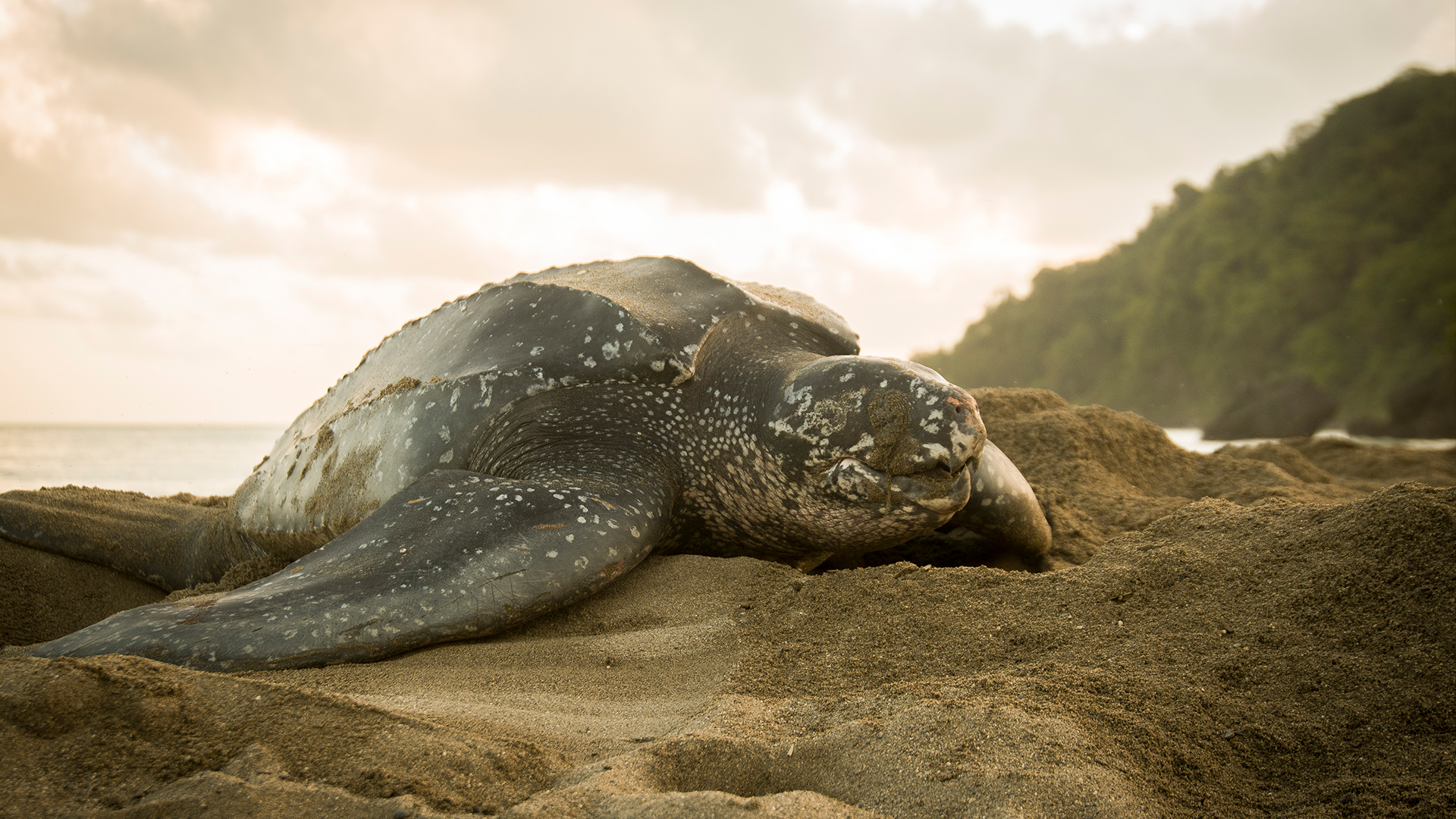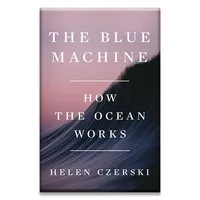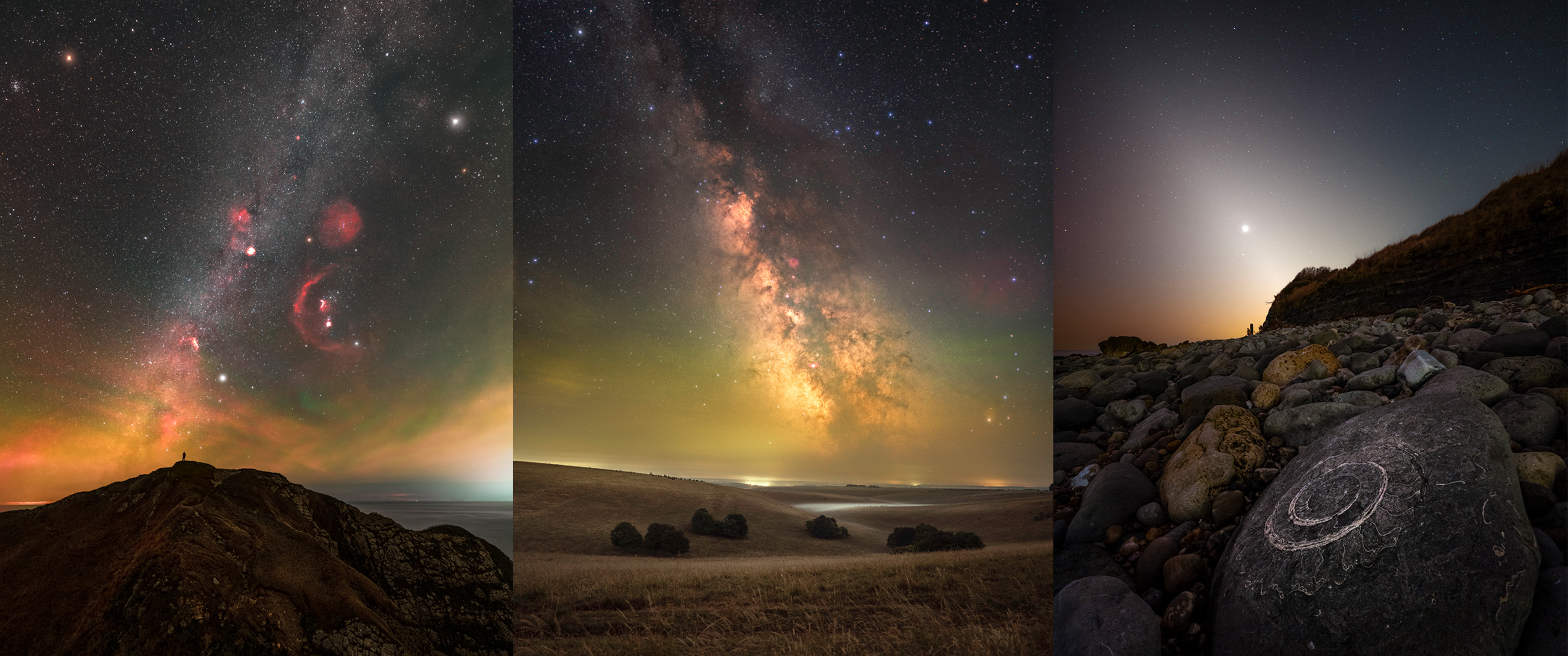'This is the cost of living in seawater': The ingenious and (to us) heartbreaking way turtles survive the salty oceans
"To keep eating without killing herself with salt, the turtle must cry around eight litres of tears every hour. But this is the cost of living in seawater."

Water is essential for life, but with 96% of all Earth's water found in the oceans, most of it is almost entirely undrinkable by many of the species that live in it. But still life finds a way.
In this extract from the new book "The Blue Machine: How the Ocean Works" (W. W. Norton & Company, 2023), author and oceanographer Helen Czerski explains the ingenious and (at least for us humans) emotional way leatherback turtles contend with the extreme saltiness of their environment.
The cool water off Nova Scotia is a foggy turquoise, lit by diffuse sunlight above and fading into darkness below. The fog is made up of tiny fragments of drifting organic life, individually invisible but collectively cloaking every resident in fuzzy ignorance of everything more than 5 meters [16.4 feet] away. The ocean is quiet, disturbed only by an occasional breaking wave at the surface and the very distant deep hum of ship engines.
A leatherback turtle emerges from the fog and glides slowly through the bright nothingness. From nose to tail she is nearly 2 meters [6.6 feet] long, a solid, mottled grey oval with huge flippers and a snub nose. She has travelled nearly 4,000 kilometers [2,500 miles] from her breeding ground in the Caribbean, and she is hungry.
At a molecular level, the turtle isn't too different from us. The average salinity of her body is around a third that of seawater, and her reptilian kidneys can't produce urine that has a higher salt concentration than her blood. Her body is a neat package of low-salinity life, and her cells will fail if her insides come anywhere near the salinity of the water in which she swims. Her leathery skin is the fortress that keeps the salt out.
Related: 'Earth's civilizations are shaped by what the ocean engine does,' says oceanographer Helen Czerski
From the gloom below comes a haunting call: the long, slow cry of a humpback whale. These whales feed on fish, and those fish are much less salty than the ocean. As they're digested, their carbohydrate and fat release water, and the fish themselves contain useful water in their cells. So if a whale is careful, squeezing out the seawater that comes with each mouthful of fish before it swallows, it can get enough water from its food without taking in too much extra salt. We don't yet know for certain, but it seems likely that whales don't need to drink. The work of eliminating excess salt is largely done for them by their fishy prey, who are experts at drinking seawater and then pushing salt back out into the environment through their gills, urine and feces.
Get the world’s most fascinating discoveries delivered straight to your inbox.
This gentle giant weeps as she eats.
Helen Czerski
Few ocean vertebrates drink, but all of them face the challenge of keeping the water in and the salt out. The leatherback turtle is the master of this game. The turquoise gloom in which she swims is home to a living buffet of jellyfish, which is what this turtle feeds on. Every minute or two, a dark, pulsing silhouette emerges from the fog, a messy cascade of orange tendrils hanging from a colorless dome. A slight twist of her flippers, and the turtle is bearing down on the hapless mass of jelly. One snap and a puff of debris is all that remains.
But the turtle's salt budget has just taken a hit. A jellyfish is really just a small bucketful of ocean masquerading as life. It's 96% water, and most of the other 4% is salt, making the jellyfish as salty as the ocean. Less than 1% of the jellyfish is organic material and therefore useful food, and so the cost of dinner is that the turtle must accept three times as much salt as food in every mouthful.
The solution is both ingenious and (to us) heartbreaking: this gentle giant weeps as she eats. A huge proportion of her head is taken up with salt glands, organs that remove salt and push it out of her tear ducts. Leatherback tears are thick and viscous and almost twice as salty as the ocean. To keep eating without killing herself with salt, the turtle must cry around 8 liters [2 gallons] of tears every hour. But this is the cost of living in seawater. As the turtle slowly sculls onwards, fading into the turquoise, her body is sorting the ocean, scrimping and saving the nutrients, rejecting the salt, and flushing through the water.
The solution is both ingenious and (to us) heartbreaking: this gentle giant weeps as she eats. A huge proportion of her head is taken up with salt glands, organs that remove salt and push it out of her tear ducts. Leatherback tears are thick and viscous and almost twice as salty as the ocean. To keep eating without killing herself with salt, the turtle must cry around 8 liters [2 gallons] of tears every hour. But this is the cost of living in seawater. As the turtle slowly sculls onwards, fading into the turquoise, her body is sorting the ocean, scrimping and saving the nutrients, rejecting the salt, and flushing through the water.
The Blue Machine: How the Ocean Works - $21.93 on Amazon
If you want to know more about how the oceans influence life on Earth, Czerski's book is available now. It's a spectacular story that covers everything from giant waterfalls under the sea, to the magnificent creatures that live within it, to the physical and cultural impact it has had on civilizations.
Helen Czerski is a physicist, oceanographer and science communicator based in the U.K. She is an associate professor in mechanical engineering at University College London. Since 2011, Czerski has worked as a presenter on several BBC Documentaries and is a regular presenter for the Fully Charged Show, a frequent face on the Cosmic Shambles Network, and hosts an ocean podcast for the Bertarelli Foundation called Ocean Matters. She is the author of "The Blue Machine: How the Ocean Works" (W. W. Norton & Company, 2023) and "Storm in a Teacup: The Physics of Everyday Life" by the same publisher.



